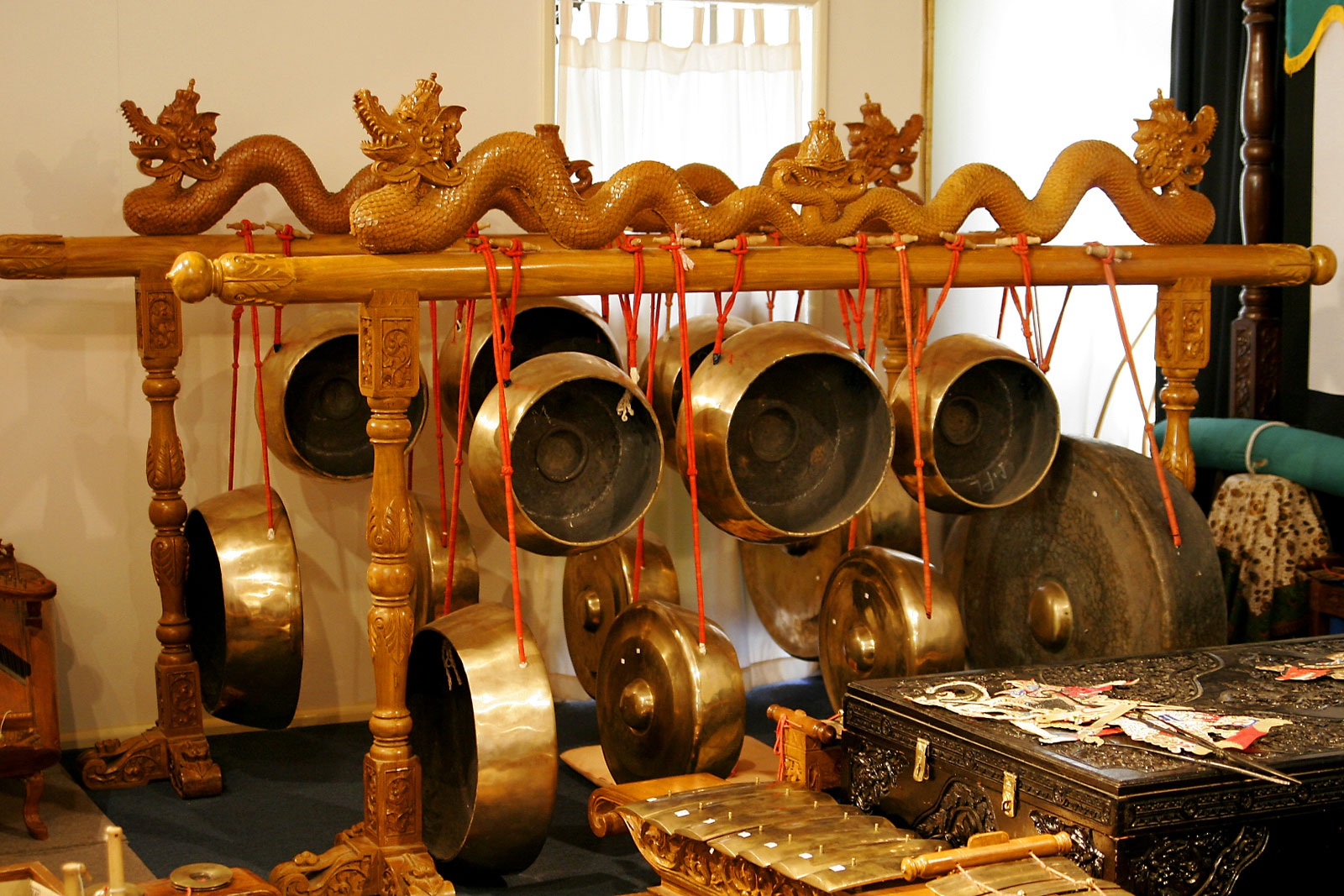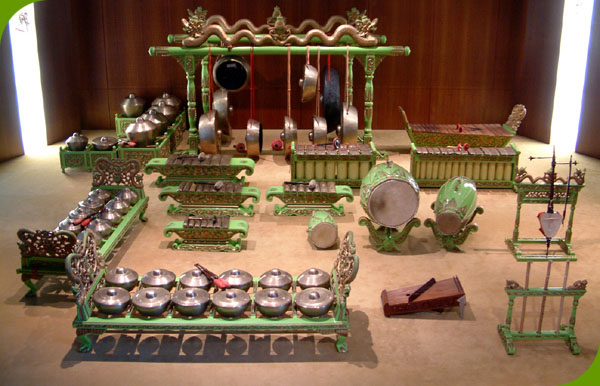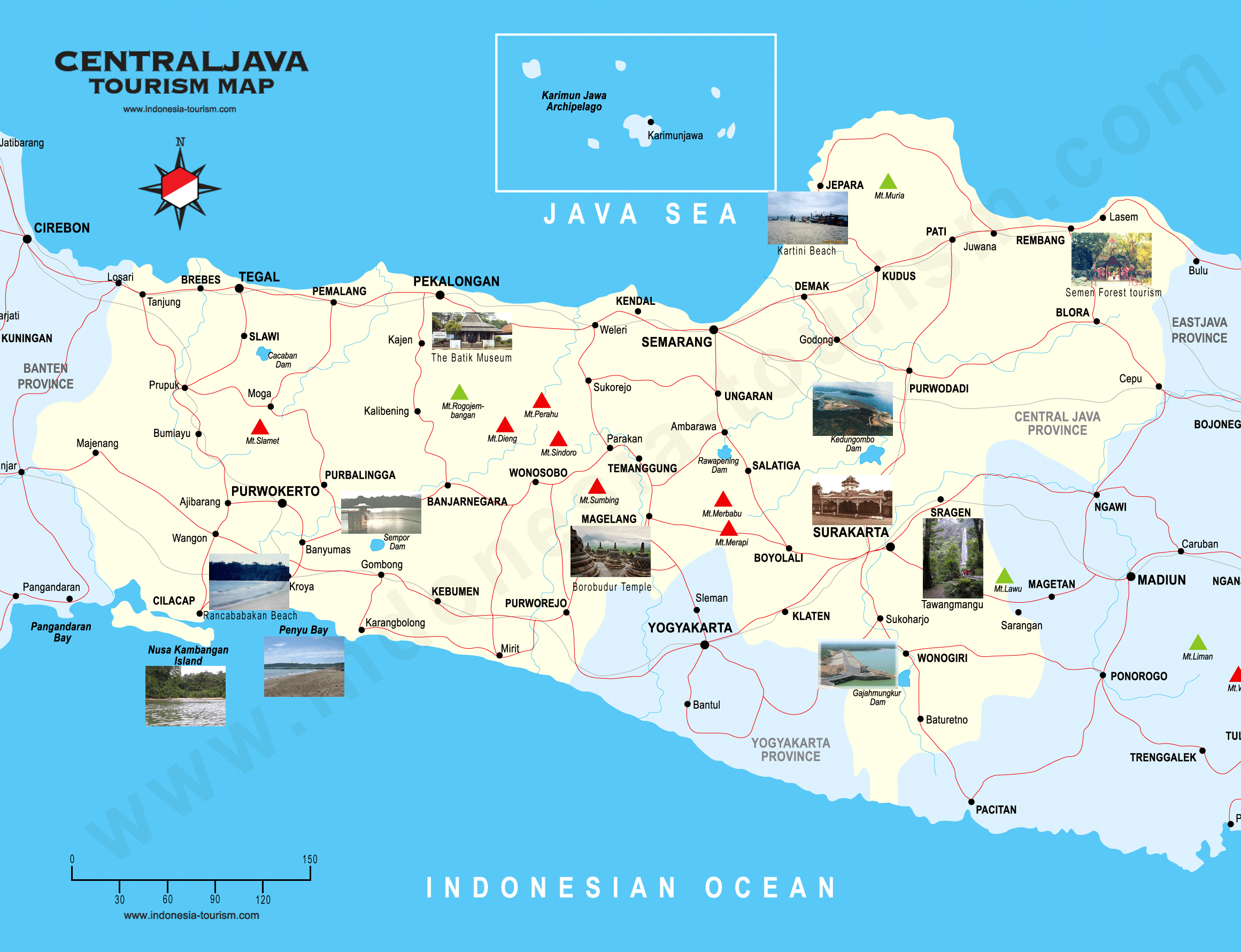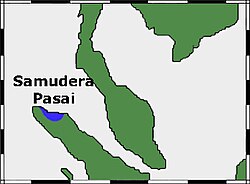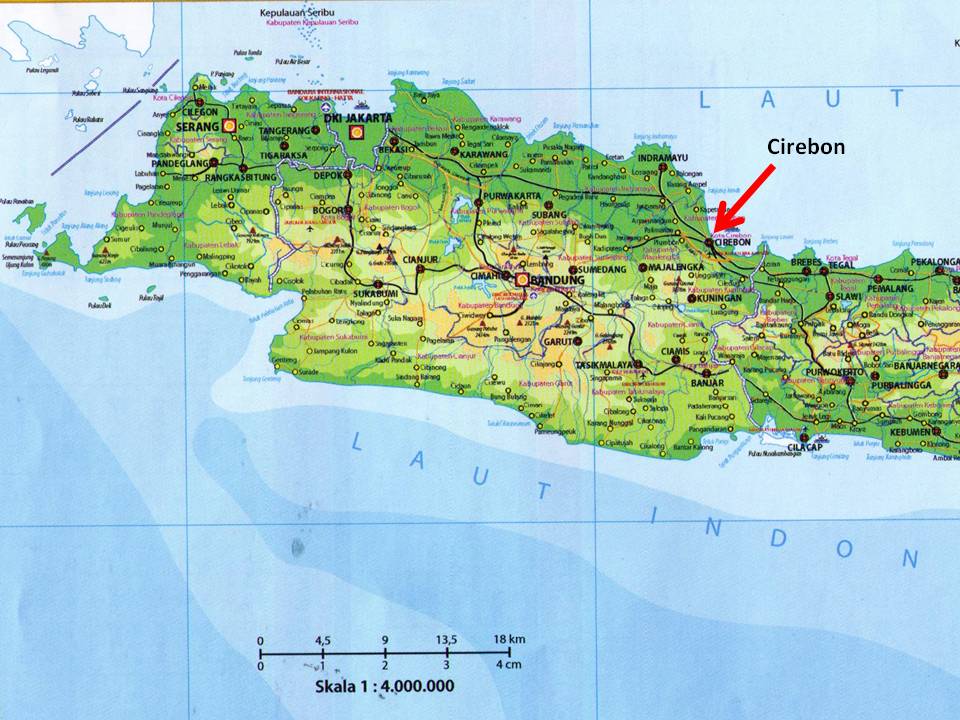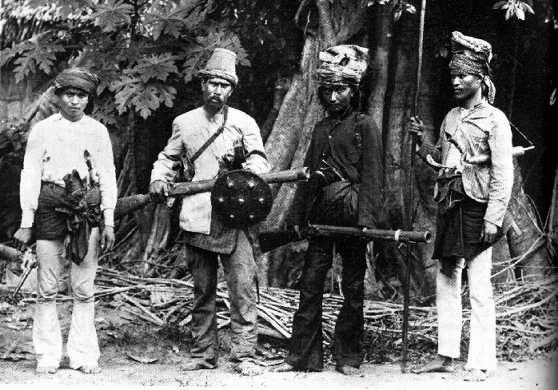Cirebon
The seat of a former Sultanate, the city's West and Central Java border location have seen its history influenced by both Sundanese and Javanese culture as well as Chinese.
Being on the border of "Sunda" and "Jawa" (i.e., Central Java), many of
Cirebon's residents speak a dialect that is a mix of Sundanese and Javanese, and it is thought that the word "cirebon" derives from the Javanese word, caruban, meaning "mixed", a reference to the city's mix of Sundanese, Javanese, Chinese, and Arabic cultural elements. Alternatively, it could be derived from the Sundanese words of "Ci" (water or river) and "Rebon" ("shrimp"). (Indeed the main production of the city is fishery including shrimps.

Aside from fishery, its harbour, Tanjung Emas, on the Java Sea has been a major hub for timber from Borneo. A small landing site "Penggung" also serves the TNI-AU. The city lies on Jalur Pantura, a major road on the northern coast of Java that stretches from Anyer, passes through Jakarta, and ends at Surabaya.
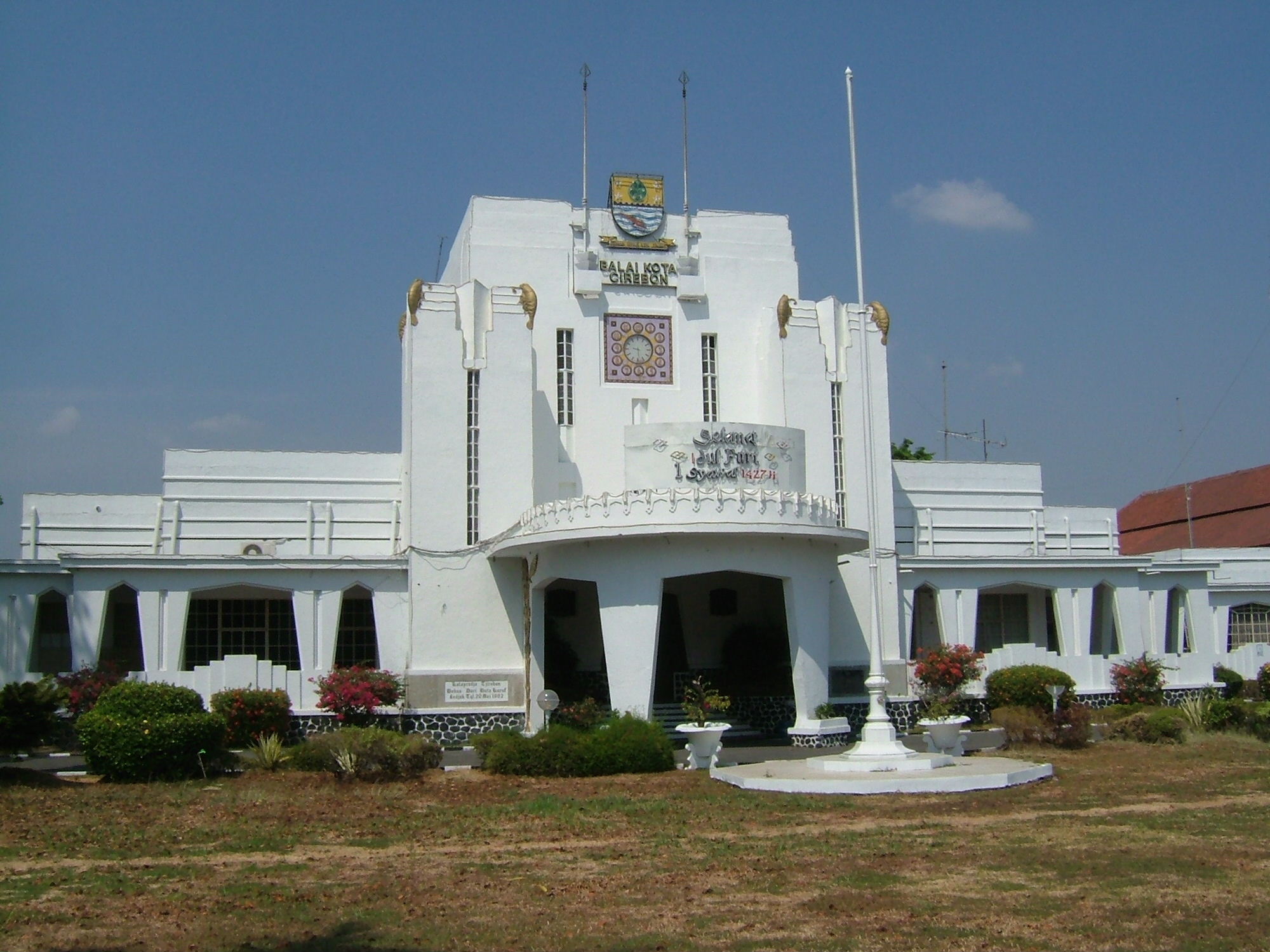
According to the manuscript Purwaka Caruban Nagari, in 15th century
Cirebon started as a small fishing village named Muara Jati. At that time the port of Muara Jati already attracted foreign traders. The port master at that time is Ki Gedeng Alang-Alang appointed by the king of Galuh kingdom located inland in Kawali, Ciamis. Ki Gedeng Alang-Alang moved the port to Lemahwungkuk, 5 kilometres southward. As the new settlement leader, Ki Gedeng Alang-Alang was bestowed the title "Kuwu Cerbon".
A prince from Pajajaran, Prince Walangsungsang, convert to Islam, and was appointed as Adipati of
Cirebon with the title Cakrabumi. He established the new kingdom of
Cirebon and declared independence from Galuh. The establishment of
Cirebon sultanate marked the 1st Islamic rule in Western Java, that grew from modest fishing village of Muara Jati to a busy port of Java northern coast.
Cirebon grew as one of the independent sultanates under the leadership of Sunan Gunungjati, in the early 16th century.
The kingdoms of Banten and Mataram fought over
Cirebon, which declared its allegiance to Sultan Agung of Mataram. But the later Mataram king ceded the city to the Dutch in the 1677. A treaty in 1705 saw
Cirebon become a Dutch protectorate jointly administered by three sultans whose courts rivalled those of Central Java.
During the time of the Dutch "Culture System" a flourishing trade in colonial cash crops attracted many Chinese entrepreneurs and the Chinese influence is still evident in the batik for which
Cirebon is famous.
Cirebon suffered a famine in 1844, apparently triggered by a combination of drought and the shift from subsistence agriculture to cash crops, particularly indigo and sugarcane.
The city's population was 298,224 at the Indonesia Census of 2010. As with other coastal cities in Indonesia, a large population of ethnic Chinese has flocked into the city as a result of long-term Chinese immigration since the 17th century. Significant suburbs lie within densely populated
Cirebon Regency, and the official metropolitan area encompasses this entire regency as well as the city.
Although surrounded by Sundanese-speaking areas in West Java, linguists have stated clearly that
Cirebon are Javanese language areas. In addition, this is supported by the
Cirebon people referring to themselves as "wong Jawa" ("Javanese people"), and to their language as "basa Jawa" ("Javanese"). However, the
Cirebon dialect is sufficiently different from the dominant south central Javanese dialect that it is sometimes assumed to be non-Javanese by outsiders.
Some of the local political elite in
Cirebon and surrounding regencies have campaigned for
Cirebon city, together with the regencies of
Cirebon, Indramayu, Kuningan and Majalengka to be established as a new province - in the same way as Banten Province was formed by splitting it away from West Java. To be a new province it is required that it should be proposed by at least three regencies. Leaders from four of these administrations have given their consent, but Majalengka Regency has turned down the idea and indicated that it would prefer to stay part of West Java. However, the lack of support from the Majalengka area does not preclude
Cirebon city and the other three regencies from continuing to promote the idea.
Cirebon itself is known as Grage in the
Cirebon dialect of Javanese language, which came from the words "Negara Gede", meaning "Great Kingdom." As a port city,
Cirebon attract settlers from around and overseas alike.
Cirebon culture was described as Java Pasisiran culture, similar with those of Banten, Batavia, Pekalongan, and Semarang, with notable influences mixture of Chinese, Arabic-Islamic, and European influences.
The Tari Topeng
Cirebon, or
Cirebon mask dance, is a dance style peculiar to the city. Topeng
Cirebon mask dance, inspired by Javanese Panji cycles is one of notable
Cirebon traditional dance and quite famous within Indonesian dances.
Cirebon culture also influenced by Islamic Middle Eastern culture, such as the Burokan tradition where people held the image of buraq â€" traditionally made from bamboo frame and paper skin, or other materials â€" around the village accompanied with music. The traditions on held bamboo statues is similar with Sundanese Sisingaan, Betawi Ondel-ondel, or Balinese Ogoh-ogoh, yet differ in its Islamic theme. Burokan usually held during festive occasion such as circumcision or marriage, accompanied by popular
Cirebon folk songs, such as tarling.
The remnants of
Cirebon sultanate; Kasepuhan, Kanoman, Kaprabonan, and Kacirebonan keratons are now run as cultural institution to preserve
Cirebon culture. Each still held their traditional ceremonies and become the patrons of
Cirebon arts. Some of royal symbols of
Cirebon Sultanate describe their legacy and influences. The banner of
Cirebon Sultanate is called "Macan Ali" with Arabic calligraphy arranged to resemble a panther or tiger, describe both Islamic influence and also Hindu Pajajaran Sundanese King Siliwangi tiger banner. Although didn't held real political power anymore, the royal lineage of
Cirebon still well respected and held in high prestige among the people of
Cirebon.
The royal carriage of Kasepuhan's Singa Barong and Kanoman's Paksi Naga Liman carriage resemble the chimera of three animals; eagle, elephant, and dragon, to symbolyze Indian Hinduism, Arabic Islam, and Chinese influences. The images of Macan Ali, Singa Barong and Paksi Naga Liman also often featured as pattern in
Cirebon batik.
As a coastal city,
Cirebon's main industry is fishery. Its products include terasi, petis, krupuk udang (shrimp crackers) and various salted fish.
Cirebon is famous for its good quality salted fishes, such as jambal roti, juhi (salted cuttlefish), rebon and ebi (dried small shrimp). These products often being seek by visitors, especially Indonesian domestic tourist and visitors from other cities, as oleh-oleh (food souvenirs/gift).
Cirebon is also known for its local cuisines and delicacies, such as empal gentong, nasi lengko (rice mixed with bean sprouts, fried tofu, fried tempeh, topped with peanut sauce and soy sauce), nasi jamblang (rice of various side dishes), tahu gejrot (fried tofu with ground garlic, chili and shallot, topped with thin and sweet soy sauce), tahu petis (dry fried tofu served with petis dip sauce), tahu tek-tek (fried tofu topped with peanut sauce and mixed with vegetables) and ayam panggang (barbecue chicken). Another native food is "Docang" (lontong with sour vegetable soup).
Cirebon is divided into five subdistricts: Harjamukti, Kejaksan, Kesambi, Lemahwungkuk, and Pekalipan.
Cirebon City economy is influenced by the strategic geographical location and characteristics of natural resources so that the structure of its economy dominated by manufacturing, trade, hotels and restaurants, transport and communications and service sectors. Tomx Pires in the Suma Oriental around the year 1513 mentions
Cirebon is one of the trade center on the island of Java. After
Cirebon taken over by the Dutch East Indies government, in 1859, designated as a transit port of
Cirebon import-export goods and the political control center for the region in the interior of Java.
Until 2001, the economic contribution to the City of
Cirebon is a processing industry, followed by trade, hotels and restaurants (29.8%), transport and communications sector (13.56%), services sector (6.06%). While other sectors (9.26%) including mining, agriculture, construction, electricity, gas and an average of 2-3%.
Nearly 93% of the population has been underserved by service water from PDAM
Cirebon, the majority of customers in the city's water supply to households of the total number of existing connections (65,287).
Since the Dutch East Indies government,
Cirebon City has had a hospital named Orange, which unveiled its use on August 31, 1921 and commenced operations from September 1, 1921.
In 2009 in the city of
Cirebon has been available about 6 general hospitals, four maternity hospitals, 21 health centers, 15 health centers Maid, 20 Mobile Health Center, and 81 Pharmacies and Drug Stores 31. With the number of medical personnel such as specialist doctors about 94 people, and 116 general practitioners, 37 dentists, 847 nurses and 278 midwives.
The main boulevard is Jalan Siliwangi and it runs from the train station to the canal via the Pasar Pagi, and then the street becomes Jalan Karanggetas along which are most of
Cirebon's banks, restaurants, and hotels. There are a number of historic buildings and other key sites in
Cirebon, some of them in an advanced state of decay, including the buildings of the several kratons, the Sang Cipta Rasa Grand Mosque, and the Gua Sunyaragi Park.
Related Sites for Cirebon
- Cirebon Map | Indonesia Google Satellite Maps read Cirebon
- Radar Cirebon Online | Cirebon Real Time News read Cirebon
- Cirebon: City Guide, weather and facts galore from Answers.com read Cirebon
- Cirebon Travel Guide - VirtualTourist read Cirebon

